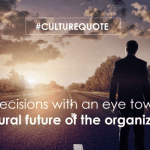Your company has put a lot of focus recently on corporate culture. You’ve worked hard to create a system of positive behaviors among your employees, and you’re seeing the results pay off in increased organizational performance. Now you would like to begin to grow your work force, but the big question is: How can you hire employees who will be a good fit for your corporate culture?
Today, one of the biggest challenges for organizational leaders is to attract, acquire, develop, retain, and promote the right talent who possess the critical traits to build the desired corporate culture. Employees are loyal to culture not strategy, and this is true for recruitment as well. Companies that have an organizational culture that is both strong and healthy are more successful in recruiting, retaining, and growing talent.
We have developed the Denison Leadership Potential Report (DLPR) as a tool to address this problem and help companies make the correct hiring decisions. When used in conjunction with the Denison Organizational Culture Survey (DOCS), it can also identify gaps in the workforce that can be addressed proactively, resulting in a more dynamic and adaptable organization.
In an increasingly globalized economy, this early awareness and flexibility has become a key differentiator among organizations. Diversity has also been shown to positively impact an organization’s effectiveness. The more diverse the employee base in terms of experience, culture, age, and gender, and the more open the corporate culture to change, the better prepared the organization is to deal effectively with uncertainty and change.
All of this highlights they key role employees play in creating a strong and healthy corporate culture, which proves that talent management must be treated as an integral part of any culture project for companies seeking to achieve higher organizational performance.
To learn more about how talent management aligns with organizational culture to impact performance, read my latest TRANSFORM article, “Connecting Organizational Culture with the Talent Management Lifecycle.”




